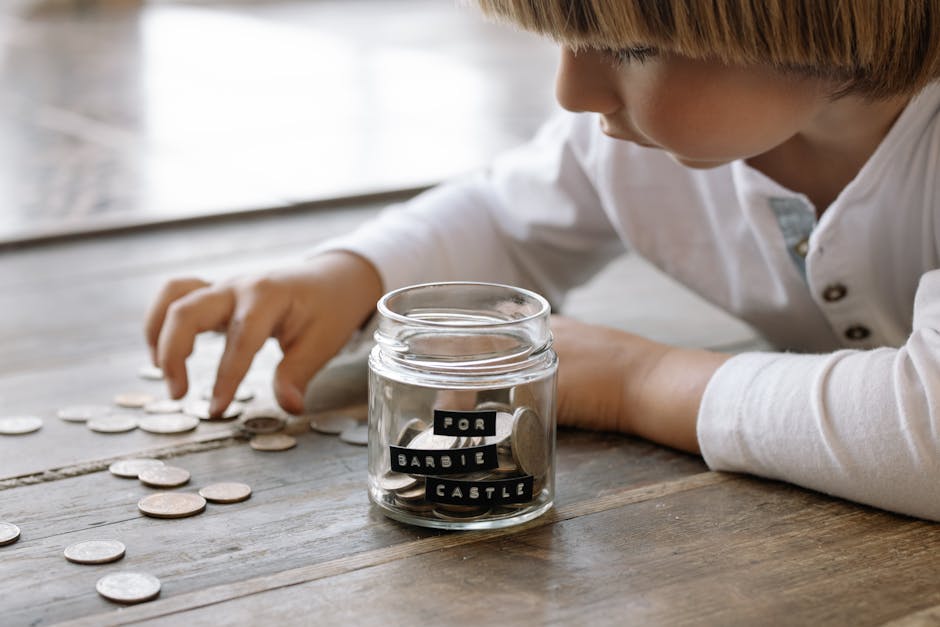Building an emergency fund might sound daunting, but it’s easier than you think. With a few smart moves, you can start padding your savings fast.
Life loves surprises, and not the fun kind. Having a financial cushion means you’re ready when the unexpected happens.
Whether you’re starting from scratch or looking to speed up your savings, small changes can add up quickly. It’s all about consistent, intentional steps.
Sometimes the hardest part is just knowing where to begin. That’s why this list breaks it down into easy, actionable strategies.
From tweaking your daily habits to finding extra income streams, these tips cover a lot of ground. Pick the ones that fit your life best.
Ready to build your emergency fund faster than you thought possible? Let’s dive in!
Smart Budgeting and Spending Habits
Saving money starts with understanding where it’s going. Smart budgeting isn’t about restriction — it’s about making your money work for you. When you track your spending, you often find easy places to cut back without feeling deprived.
These strategies focus on refining your daily money habits and making intentional choices. It’s about creating a realistic plan that frees up cash for your emergency fund without sacrificing your peace of mind.
Let’s explore some simple budgeting and spending habits that can quickly increase your savings.
1. Create a zero-based budget – Assign every dollar of your income a purpose, from bills to savings, so nothing is left unallocated. This method prevents overspending and can often free up 10-20% more of your income for your financial goals. Pro tip: Use a budgeting app to automate the tracking process and gain better insights into your spending habits over time.
2. Cut out subscription services you don’t use – Take a moment to review all your subscriptions, from streaming platforms to magazine apps. Canceling the ones you rarely use can free up a surprising amount each month. This quick cleanup is an easy way to redirect funds toward your savings.
3. Practice the 24-hour rule – When tempted to make non-essential purchases, wait 24 hours before buying. This pause often helps curb impulse spending and prevents cluttering your life and budget with things you don’t truly need.
4. Use cash envelopes for discretionary spending – Allocate a set amount of cash for categories like dining out or entertainment. Once the cash is gone, no more spending in that category until the next budget cycle. This tactile approach keeps you aware of your limits and helps avoid overspending.
5. Automate your savings contributions – Set up an automatic transfer to your emergency fund right after payday. This “pay yourself first” strategy ensures consistent growth of your savings without relying on willpower.
With a solid handle on your budget and spending, you’re ready to explore ways to boost your income and save even faster.
Maximizing Income and Side Hustles
Sometimes cutting expenses isn’t enough — increasing your income can accelerate your savings journey. Side hustles and creative income streams offer flexible options to bring in extra cash without quitting your day job.
From freelancing to selling unused items, these ideas help you earn more on your terms. The key is finding something that fits your skills, interests, and schedule so it’s sustainable and enjoyable.
Here are practical ways to boost your income and grow your emergency fund faster.
6. Freelance your skills online – Platforms like Upwork or Fiverr let you offer services such as writing, graphic design, or social media management. This flexible work can bring in extra cash whenever you have free time, making it a great way to save quickly.
7. Sell unused items around your home – Declutter and make money simultaneously by selling things you no longer need on sites like eBay or Facebook Marketplace. Not only do you get cash, but you also create a tidier living space that feels more peaceful.
8. Participate in paid surveys and market research – While not lucrative alone, consistent participation in surveys can add up over time. Use reputable sites and set aside a few minutes daily to earn extra spending money that can be funneled into savings.
9. Start a small side hustle – Whether it’s dog walking, tutoring, or handmade crafts, a side business can generate meaningful income. Choose something you enjoy to stay motivated and watch your emergency fund grow.
10. Rent out extra space or belongings – If you have a spare room, parking spot, or even tools, consider renting them out through apps like Airbnb or Fat Llama. This passive income stream can boost your fund without much extra effort.
Increasing your income is a powerful step, but pairing it with smart saving habits makes your emergency fund unstoppable.
Cutting Costs on Essentials
Essentials like housing, transportation, and groceries usually take up the largest part of your budget. Finding ways to trim these costs can free up significant amounts for savings.
This section focuses on practical tips to lower your regular bills and everyday expenses without sacrificing comfort or quality of life. Sometimes small tweaks lead to big savings over time.
Here are five effective ways to reduce your essential expenses and build your emergency fund faster.
11. Negotiate your bills – Call your service providers for internet, cable, or insurance and ask for better rates or discounts. Many companies prefer to keep customers and will offer deals if you simply ask.
12. Cook at home more often – Preparing meals at home is almost always cheaper and healthier than eating out. Plan your meals and batch cook to save time, reduce food waste, and stretch your grocery budget further.
13. Use public transportation or carpool – Cutting back on solo driving can save on gas, maintenance, and parking fees. Explore transit options or connect with coworkers for carpools that lower your commuting costs.
14. Buy generic brands – For groceries, household goods, and medications, generic or store brands often offer the same quality at a fraction of the price. Switching to these can lead to substantial monthly savings.
15. Lower your utility usage – Simple habits like turning off lights when not in use, unplugging devices, and adjusting your thermostat can reduce your electricity and water bills. These small actions add up quickly over time.
Once you’ve trimmed your essentials, it’s time to tackle the less obvious areas where money might be leaking.
Smart Lifestyle Adjustments
Sometimes, the key to saving faster lies in adjusting your lifestyle choices. These aren’t about deprivation but about making smarter, intentional decisions that align with your financial goals.
By shifting habits around entertainment, travel, and daily routines, you can free up money without feeling like you’re missing out. It’s all about balance and prioritizing what truly matters.
Here are lifestyle tweaks that can help you build your emergency fund without sacrificing joy.
16. Swap expensive hobbies for free or low-cost alternatives – Instead of pricey gym memberships or costly outings, try hiking, home workouts, or community events. These options keep you active and entertained while saving money.
17. Limit impulse buys with a shopping list – Always shop with a prepared list to avoid grabbing unnecessary items. Sticking to your list reduces spontaneous spending and keeps your budget intact.
18. Reduce alcohol and coffee shop visits – Cutting back on daily lattes or weekend drinks can save a surprising amount. Brew your own coffee and enjoy socializing at home to keep costs low.
19. Delay big purchases – When eyeing expensive items, wait at least a month before buying. This cooling-off period helps you assess if it’s truly necessary or just a fleeting want.
20. Use cashback and rewards wisely – Utilize credit card rewards or cashback apps for purchases you’d make anyway. This way, you get a bit back on spending, which you can funnel directly to savings.
Adjusting your lifestyle in small ways makes saving feel natural and sustainable, setting you up for lasting financial resilience.
Leveraging Financial Tools and Resources
Technology and financial products can be your best friends when building an emergency fund. From apps that automate savings to accounts that maximize your interest, using the right tools can supercharge your progress.
This section highlights resources that simplify saving and help your money grow faster. With a little setup, these tools can take much of the effort out of saving.
Let’s check out some financial tools and resources that make building your emergency fund easier and more efficient.
21. Open a high-yield savings account – These accounts offer better interest rates than traditional savings accounts, helping your emergency fund grow faster. Look for ones with no fees and easy access to your money in emergencies.
22. Use savings apps that round up purchases – Apps like Acorns or Qapital round up your daily purchases to the nearest dollar and save or invest the difference. It’s a painless way to save small amounts consistently without thinking about it.
23. Set up automatic transfers on payday – Automate moving a set amount from your checking to savings account each payday. This “out of sight, out of mind” approach ensures consistent contributions without manual effort.
24. Utilize employer benefits like direct deposit splits – Some employers allow you to split your paycheck between checking and savings accounts. This helps you save automatically without extra steps.
25. Use budgeting and financial planning software – Tools like YNAB, Mint, or EveryDollar help track your spending, set goals, and visualize your progress. Seeing your savings grow can motivate you to keep going.
With these tools in place, your emergency fund can grow steadily with minimal hassle, making financial security feel more attainable than ever.
Building an emergency fund doesn’t have to be overwhelming or slow. With a blend of smart budgeting, extra income, lifestyle choices, and the right tools, you can get there faster than you imagined.
The key is to start small, stay consistent, and adjust strategies as your life changes. Every dollar saved is a step toward peace of mind.
So, pick a few tips from this list and begin today — your future self will thank you!



